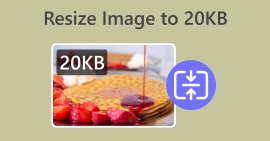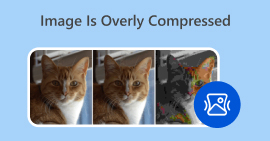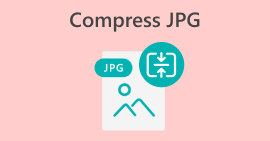写真の圧縮率: 画像を効率的に圧縮する
画像圧縮に関しては、圧縮率の概念を理解することが重要です。これは一般的な用語かもしれませんが、常に誤解され、別の文脈では異なる意味に解釈されます。たとえば、ユーザーは、圧縮された画像の出力品質は常に同じで、低い圧縮率を使用するとサイズが大幅に減少すると想定しています。実際には、圧縮率と使用される圧縮の種類によって異なります。
To gain a comprehensive understanding of photo compression ratios and effective compression methods, read this article and immerse yourself in what it means by photo compression ratio, as well as the methods on how to change them. Get yourself prepared and learn how to compress your images efficiently.

パート1.写真圧縮率とは何か
写真の圧縮率とは、圧縮されていない写真のバイト数と圧縮されたときのバイト数の比率です。簡単に説明すると、写真ファイルが元のサイズと比べてどれだけ小さくなるかということです。つまり、写真の圧縮率が高い場合、写真のサイズを小さくできるため、写真がぼやけたり、ピクセル化されたりする可能性があるということです。一方、写真の圧縮率が低い場合、圧縮された写真のサイズはわずかに小さくなります。これをよりよく理解するために、非可逆圧縮と可逆圧縮を比較してみましょう。
Lossy Compression
これは、写真のサイズと品質を大幅に削減できる画像圧縮の一種です。つまり、写真の圧縮率が高いということです。たとえば、写真の元のサイズが 10 MB で、500 KB に圧縮された場合、写真の圧縮率は 20:1 になります。

Advantages:
• Significantly reduces file size.
• Ideal for web usage.
Disadvantages:
• Loss of image quality, especially in high compression levels.
• Not suitable for images requiring exact reproduction of original data.
Lossless Compression
非可逆圧縮と比較すると、このタイプの圧縮では情報の損失がなく、画像の品質は元の画像とまったく同じままです。
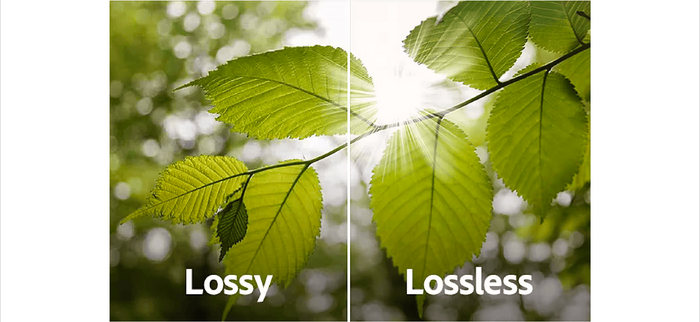
Advantages:
• No significant loss of image quality.
• Suitable for images requiring high fidelity.
Disadvantages:
• ファイルサイズの縮小が少なくなります。
パート2.写真の圧縮率を変更する方法
画像の圧縮率を調整すると、画質とファイル サイズのバランスが適切に保たれ、見栄えがよく、スペースも少なくて済みます。これを実現するには、Photoshop を使用します。このツールを使用すると、写真の圧縮率の調整など、さまざまな画像編集タスクを実行できます。この機能を使用すると、特定の要件に合わせて画質を微調整できます。Photoshop を使用して写真の圧縮率を変更する方法は次のとおりです。
Step 1. First, import the image file that you want to change the compression ratio by going to the File tab and clicking the Open option.
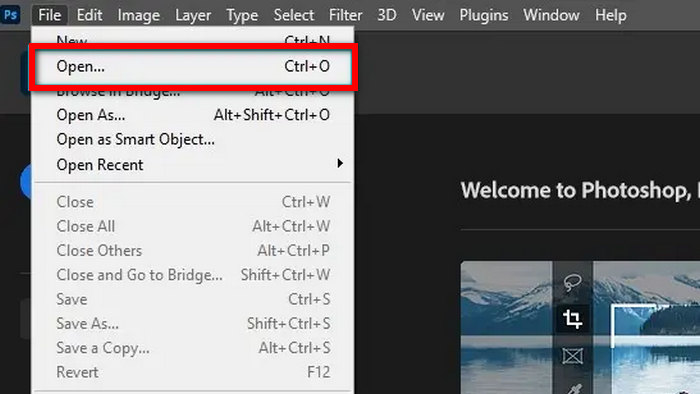
Step 2. Once you have your photo imported in Photoshop, go to the Image tab and click on the Image Size.

Step 3. Now, in the image dialogue box, set your desired resolution. After that, set your target Height and Width values. Take note that this is in Pixels. Once done, just click the OK button.
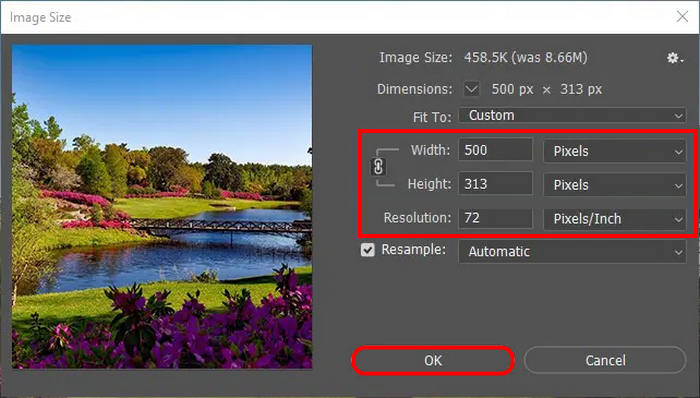
Step 4. To save your file, go to the File tab and choose Save a copy in the menu.

Step 5. After clicking the Save button, you’ll see a JPEG options box. From there, you can easily adjust the image quality of your image by sliding the bar in the Image Options section. Once done, click OK to save.
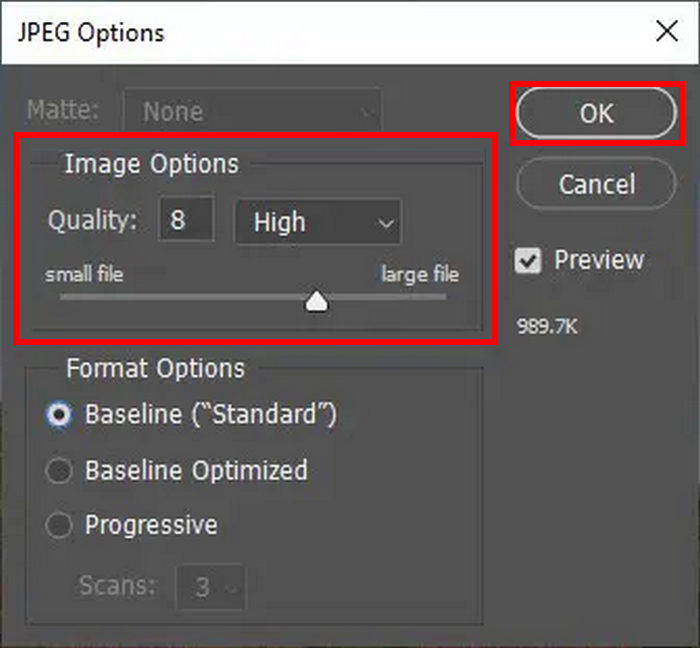
この方法を使えば、写真の圧縮率を簡単に変更できます。ただし、これは一部の人にとっては少し複雑であり、新しいユーザーは完全な機能を利用するためにサブスクリプションを利用する必要があります。
パート3. ボーナス: 品質を落とさずに画像を圧縮する
FVC Free Image Compressor is a free online image compressor tool that reduces the image size but leaves no obvious quality loss in the output. Compared to some compressor tools, this one has great optimization and compression algorithms, ensuring the best quality resolution of the compressed photo.
FVC Free Image Compressorを使用して写真を圧縮する方法は次のとおりです。
Step 1. First, you need to go over the official website of FVC Free Image Compressor.
Step 2. After that, click Upload Images to import the photos you want to compress. This tool automatically compresses your photos.

Step 3. Wait for the compression process to finish. Once done, you’ll see a bar status stating it’s finished and information on the before-and-after size of the compressed image. After that, click Download All to save your image.

写真を簡単に圧縮したい場合は、FVC の無料画像圧縮ツールを使用するのが最適な方法です。 1 回のクリックで圧縮でき、写真のサイズと品質が適切に圧縮されることが保証されます。
パート4. 写真の圧縮率に関するよくある質問
写真を 20:1 の比率に圧縮するにはどうすればよいでしょうか?
写真を 20:1 の比率に圧縮するには、Photoshop などの画像編集ツールやオンライン コンプレッサーを使用できます。Photoshop では、目的の圧縮率が得られるまで、画像品質設定と解像度を調整します。また、圧縮またはダイなどのターゲット ファイル サイズや圧縮レベルを指定するオプションを提供するオンライン ツールもよくあります。ただし、利便性に関しては、FVC Free Image Compressor ツールも写真を 20:1 の比率で圧縮するのに最適なツールです。
写真の圧縮率を調べるにはどうすればいいですか?
写真の圧縮率を求めるには、元のファイル サイズを圧縮後のファイル サイズで割ります。たとえば、元の写真が 10 MB で、圧縮後の画像が 0.5 MB の場合、圧縮率は 10 MB / 0.5 MB = 20:1 になります。
JPG ファイルの圧縮率はどれくらいですか?
JPG ファイルの写真圧縮率は、圧縮時に使用される品質設定によって異なります。圧縮率が高いとファイル サイズは小さくなりますが、画質は低下します。一方、圧縮率が低いと、ファイル サイズは大きくなりますが、画質は向上します。Web での使用における一般的な JPG 圧縮率は 10:1 ~ 20:1 です。
写真を圧縮できる量に制限はありますか?
はい、画質が大幅に低下する前に写真を圧縮できる量には実際的な限界があります。圧縮率を高くすると、複雑なディテールやグラデーションのある画像では特に、ピクセル化やぼやけなどの目に見えるアーティファクトが発生することがよくあります。
結論
Understanding and adjusting the photo compression ratio is essential for optimizing images to balance quality and file size. Adobe Photoshop offers a powerful way to manage this, providing fine-tuned control over image quality. For those seeking simpler solutions, tools like FVC Free Image Compressor offer efficient alternatives.
今すぐ画像の最適化をコントロールしましょう。高度な編集には Adobe Photoshop をお試しください。また、すばやく簡単に圧縮するには FVC Free Image Compressor を使用してください。



 ビデオコンバーター究極
ビデオコンバーター究極 スクリーンレコーダー
スクリーンレコーダー
